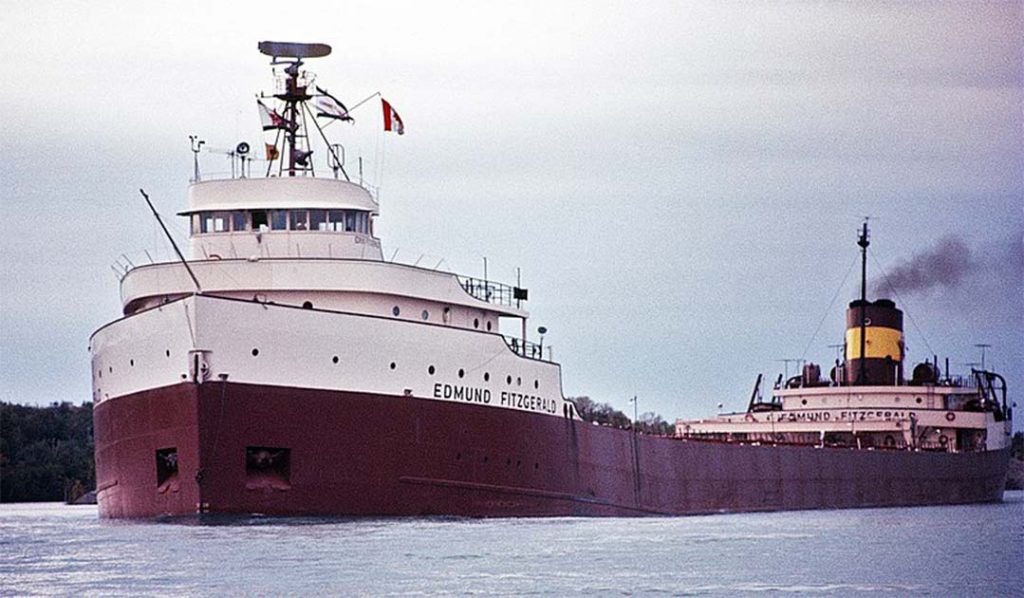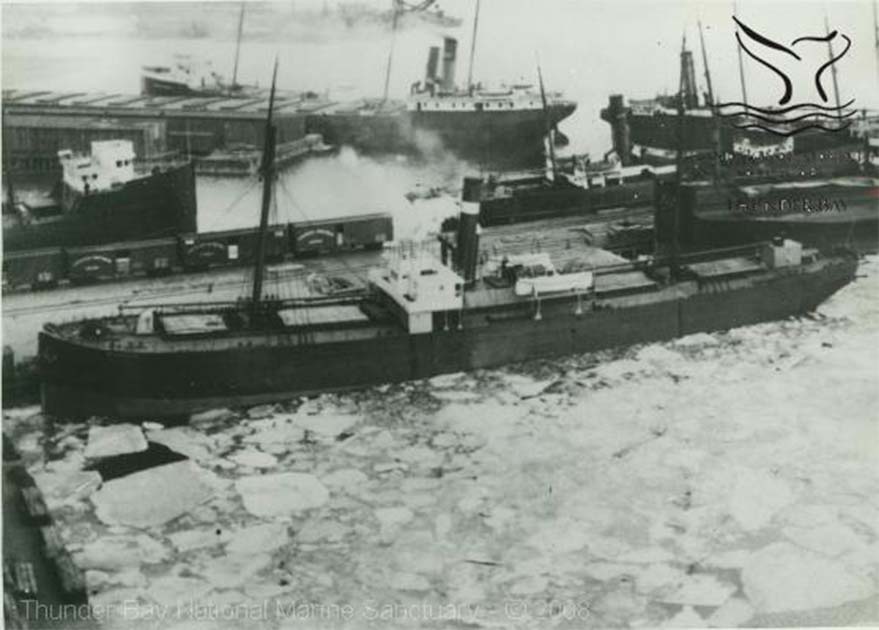The SS Edmund Fitzgerald was, at her launch in 1958 the largest ship operating on the Great Lakes. An ore carrier, she was 729 feet (222 m) long, large and sturdy.
Then, one night in November 1975, she vanished during a storm. Her hull was found four days after her disappearance, at the bottom of Lake Superior in deep water and in two pieces. She had been torn in half.
For many people, that was enough. The Edmund Fitzgerald was famously long and with a narrow beam, to make passage along the canals that connected the lakes possible, and the storm that night had been high. The ship had been twisted beyond her tolerance limits, torn in two, and sank with the loss of 29 lives.
However, some believe that the storm itself was not enough to have sunk the mighty Edmund Fitzgerald. Some believe that a monster rumored to lurk in Lake Superior was the real culprit. This monster was known as the Three Sisters.

In total, around 350 ships have never returned once they sailed through this lake. More than 10,000 people lost their lives in these dangerous waters, called the graveyard of all the Great Lakes. The area between the Grand Marais, Whitefish Point and Michigan is the most dangerous area for the ships in Lake Superior.
And to be sure these lakes are dangerous. The weather and rapidly changing climatic conditions are very unpredictable around Lake Superior. The temperatures can turn freezing almost without warning, and storms can show up at any moment.
- Discovery of Ancient Shipwrecks in the Black Sea
- The Ocean Ranger, the Mekhanik Tarasov and the Terrifying Power of Nature
The most common reason for people remains around this lake is by drowning. People who show up in the middle of the lake with the idea of spending some relaxing hours amidst nature get hit by a big wave and lose their lives.
The Three Sisters
It is said that a repeating series of three rogue waves, the Three Sisters, attack the ships that sail to this particular area and are the major reason for most of the sinkings. Lake Superior tapers rapidly at this point and these waves, reflected off the shoreline, can speed across the surface of the lake and swamp even the largest vessel.
The danger of the Three Sisters is specifically the pattern of the attack. It is said that all three waves follow each other very closely. The ships don’t get time to fully recover from the first waves hit by shedding out the water, and by that time, the other two waves hit the ships hard. As a result, catastrophe happens, and it leads to sinkings.
The Captain of the Edmund Fitzgerald shared a report before the loss that his ship was hit by two big waves of around 30 to 35 feet (9-11 m). A third wave was said to follow the path of the other two, and it hit the Edmund Fitzgerald right at the time when it was sinking.
There have been several experiments done to examine the pattern of these waves. Some researchers even deployed some current-measuring and wave-measuring instruments all across the national lakeshore of the Apostle Islands.
Upon observing the results, there were three connected reasons for the emergence of Three Sisters. The possible causes are refraction on the shoals, reflection off the sandstone shorelines or diffraction around the islands.
The research results indicate that the waves are produced mostly near the reflecting walls. The instruments also observed that when one of the three sister waves emerges, the other two won’t be farther from it. Within a period of one hour, ships can expect around three or four of these big waves. After which, there won’t be a single wave throughout the day.
The research wasn’t done much close to Lake Superior but in the Apostles, as no one wants to experience that dangerous water trail. The waves that appeared on the data were not that big of a size, which might have sunk the Fitzgerald, but were big enough to trouble yachts or kayakers.
Upon analyzing the wave or current patterns, the experts determined a computer model for calculating the climatic history of Lake Superior for the past three decades or more. The results specify that the wave climate of the region has been consistently increasing as it has less ice coverage and experiences strong winds during the winters.
As a result, it was concluded that under the right conditions, the waves could indeed be much larger.
The Lake that Eats Men
In general, science states that warmer water allows dead bodies to float to the top. But, at Lake Superior, the bottom has a temperature of 36 degrees Fahrenheit, only just above freezing.
- What Happened to The Zebrina? Ghost Ship of the Great War
- Inhuman Monsters of the Deep: The Swimmers of Lake Baikal
These conditions create a unique environment. Thus, human body remains that sink to the bottom will never resurface. There have been numerous sinkings, as per the reports released by the national and global media.
All ship sinkings reported here are true to the best of reports as per the investigations held back then. The Three Sisters are suspected of having been involved in other shipwrecks, but their rapid speed and unpredictable nature means such accusations are hard to prove.

The May Flower is one of the oldest shipwrecks ever recorded at Lake Superior. It was a wooden scow schooner that was built in 1887. The ship sailed for the last time on 2nd June 1891, transporting sandstone blocks from Portage, Michigan, and traveling to Duluth, Minnesota.
The wooden ship encountered bad weather conditions while crossing Lake Superior and was just a few miles away from entering the harbor. But she never made it, swamped by some unseen hand she vanished for a century. Her bones were only discovered in the year 1991.
And such phenomena are not unique to the Great Lakes. Sets of waves in Scotland’s exceptionally deep Loch Ness have been observed emitting from speedboats and then recrossing the water’s surface hours later, when nothing is nearby, giving rise to all sorts of local legends.
But were the Three Sisters responsible for the sinking of the largest ship on the Great Lakes? It certainly seems possible, and the hidden danger lurks in Lake Superior to this day.
Top Image: Some believe the Three sisters sank even yje largest ship operating on Lake Superior. Source: Sirius / Adobe Stock.
By Bipin Dimri